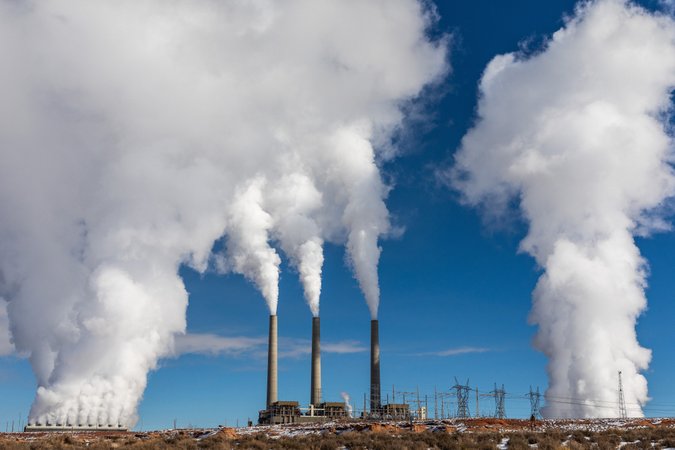Disentangling the Roles of Growth Uncertainty, Discounting, and the Climate Beta on the Social Cost of Carbon
This working paper clarifies the conceptual effect of uncertainty in future economic growth on the social cost of carbon.
1. Introduction
Getting the discount rate right is essential for estimating the social cost of carbon (SCC). Changing the discount rate from 3 to 2 percent—a change approximately consistent with recently proposed updates to federal guidance (OMB 2023a,b)—can more than double the SCC (see, e.g., Rennert et al. 2022; Barrage and Nordhaus 2023). Further, when estimating the SCC, it is common to adjust discount rates to account for uncertainty in future consumption growth and its covariance with uncertain climate impacts (or, alternatively, climate impacts’ covariance with market returns), often called the “climate beta” (Gollier 2014; Dietz et al. 2018). Yet disagreement remains as to whether this adjustment should result in a higher or lower discount rate, largely due to disagreement about the magnitude and sign of the climate beta (see, e.g., Groom et al. 2022; Drupp et al. 2023; Lemoine 2021; Dietz et al. 2018). While major integrated assessment models (IAMs) like William Nordhaus’s DICE model feature a positive climate beta and therefore employ a higher discount rate (Barrage and Nordhaus 2023), others have argued for a negative beta, implying lower discount rates (e.g., Howard and Schwartz 2022; Lemoine 2021). This debate has major consequences for estimates of the SCC, wherein a positive risk adjustment to the discount rate (positive beta) is commonly presumed to correspond to a lower SCC (e.g., Barrage and Nordhaus 2023), whereas a negative risk adjustment to the discount rate (negative beta) is presumed to correspond to a higher one (e.g., Howard 2023).
This paper demonstrates that those presumptions are generally incorrect because they consider only one side of the ledger—how uncertainty affects discount rates—while ignoring the offsetting effect of how the same uncertainty affects the value of the object being discounted: expected marginal damages from an incremental ton of carbon dioxide (CO2) emissions. In short, this paper shows that uncertainty in future consumption growth generally increases the SCC, except in one edge case where the effect is zero. This result arises because with a nonzero climate beta, uncertainty in economic growth affects not only the variance but also the expected value of climate impacts, and amid persistent growth uncertainty, this effect is particularly large for impacts occurring far in the future. As I show in this paper, this effect on expected values easily dominates the effect on the discount rate. This result implies that using risk-adjusted discount rates to discount expected climate impacts without accounting for growth uncertainty’s effect on those same expected impacts will yield highly biased estimates of the SCC. In models with a positive beta, this bias leads to substantial underestimates of the SCC, whereas in models with a negative beta, the bias leads to substantial overestimates.
Despite this result, the economic literature and applied analysis both give disproportionate and often exclusive attention to risk adjustments to the discount rate, with little or no attention to corresponding adjustments to the expected values being discounted. Indeed, it is common in cost-benefit analysis to calculate costs and benefits in a deterministic model, but then apply risk-adjusted discount rates to those deterministic values based on the idea that those costs and benefits are, in reality, uncertain with some risk profile. This approach is correct only if the deterministically modeled costs and benefits are representative of expected values embodying the same uncertainties that motivate risk adjustments in discount rates, but analysts typically do not seem to consider this in practice.
For example, recently proposed revisions to Circulars A-4 and A-94 (OMB 2023a,b) dedicate entire sections to accounting for effects of uncertainty and risk aversion, but those discussions focus principally on risk adjustments to discount rates. There is no mention of how those same uncertainties may similarly affect expected values. This is also true of Nordhaus’s (2023) critique of the US Environmental Protection Agency’s treatment of risk and uncertainty in the discount rate (EPA 2022). The only study I am aware of that acknowledges the effect of growth uncertainty on expected values is that of Ni and Maurice (2021), who note that uncertainty affects the growth rate of expected impacts in a manner governed by the beta; nonetheless, they focus on the discount rate. In general, the common inattention in the literature to growth uncertainty’s effect on expected values has likely contributed to its widespread omission in applied analysis.
To derive these results, this paper begins by defining risk-adjusted and certainty-equivalent (also sometimes referred to risk-free) discount rates in the consumption capital asset pricing model, illustrates various conceptual features of those rates, derives analytical expressions for them under certain structural assumptions, and shows how key parameters affect the levels and trajectories of each discount rate. While many of the expressions derived herein are not completely new to the literature (e.g., related expressions are derived in Weitzman 1998; Gollier 2014; and Dietz et al. 2018), this paper synthesizes key insights from across the literature to illuminate the drivers of the term structures of risk-free and risk-adjusted discount rates and their implications for the SCC. Further, it shows the certainty-equivalent and risk-adjusted rates implied by the Greenhouse Gas Impact Valuation Estimator (GIVE; Rennert et al. 2022), demonstrating that GIVE’s relatively high central estimate of the SCC at $185 per ton of carbon dioxide is nonetheless consistent with a risk-adjusted discount rate that rises over time, with a risk premium reaching 2.7 percent by the end of its time horizon (2300).




